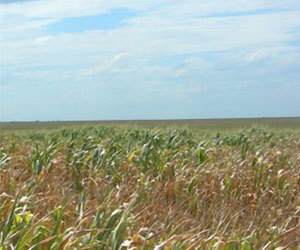




National Climatic Data Center
31 August 2007
Data in this report are compiled from preliminary statistics
A severe heat wave occurred across much of the central, southeast, and eastern parts of the Southern U.S. throughout much of August 2007. The impacts of this heat wave are still being assessed as above-normal temperatures persist across much of the Southeast. More than 50 deaths have been attributed to the excessive heat. Numerous all-time record highs were set in August, along with scores of new daily high temperatures. Average temperatures during the warmest periods from the 7th—11th and again from the 15th—17th were more than 10°F warmer than average in many parts of the country. Preliminary calculations indicate that the nationally averaged temperature during August will likely make this one of the top 20 warmest Augusts for the United States since 1895.
Although August is typically one of the hottest months of the year, several factors enhanced the severity of this heat wave. A dominant ridge of high pressure persisted stable across the south, central and southeast regions for much of the month, prohibiting the jet stream from progressing southward and other low-pressure systems from moving eastward. The heat was also exacerbated by persistent and intensifying levels of severe to exceptional drought across much of the Southeast, which began early this year. Also exacerbating the impacts of the heat and drought conditions was the devastating April Freeze that killed off many early-budding plants and crops. The persistent drought and heat wave have further decreased soil moisture to below 98-99% of normal levels.
The persistent much above normal temperatures experienced across much of the central and southeastern U.S. have been blamed for at least fifty-one deaths this month as of August 27, 2007 (AP). The highest human toll came in the state of Tennessee, which lost 15 people to the heat, 14 in the Memphis area alone. Alabama reported 12 fatalities to the heat, Missouri lost 9, and Arkansas and Georgia each had 4 fatalities. Three deaths in Illinois were attributed to the heat and 2 people in South Carolina died due to heat-related injuries. One person in Mississippi died due to the excessive and prolonged high temperatures. Not included in the above statistics were reports of at least two small children who perished when left in cars during this heat wave: one near St. Louis and one east of Cincinnati. Several other people are suspected to have perished from heat-related causes.
In addition to the numerous deaths attributed to the heat wave, innumerable heat-related illnesses have been reported in many parts of the region. Heat exhaustion has plagued everyone from teenage athletes to construction workers to those attending activities in honor of Elvis in Memphis on August 16 (AP). Prolonged exposure to high temperatures poses an especially dangerous problem for elderly, children, and low-income residents without adequate air conditioning. Many cities and/or aid organizations provided free or low-cost fans, air conditioners, cool stations, bottled water, and vouchers for electric bills in order to assist those in need. Additionally, many schools without air conditioning dismissed students early or cancelled afternoon classes during the past few weeks.

The combination of the exceptional drought and the prolonged heat wave has taken a heavy toll on the agriculture industry across the Southeast. Many crops have been severely damaged from a combination of excessive heat and prolonged dry or drought conditions in the central, southeast, and eastern parts of the Southern U.S. Soil moisture values are extremely low across much of the central and southeastern U.S. The USDA reported that 81 percent of the Alabama corn crop is in poor or very poor condition as of August 23 and the corn crop in many parts of Tennessee is forecast to be a total loss. As of August 23, 2007, between 40% and 52% of pasture and rangeland in Alabama, North Carolina, and Tennessee was listed as being in "very poor" condition (USDA). Many herd owners have been forced to sell some of their livestock due to a lack of water and vegetation and the escalating costs of food due to the effects of the heat wave and drought (AP).
Fire danger increases significantly during extremely hot and dry periods, and many areas in the Central and Southeastern U.S. were under a burn ban in late August. The State of Tennessee has implemented burning permit requirements six weeks earlier than usual.
The hydrologic impacts of the heat wave and drought include exceptionally low water levels in many streams and rivers, several of which have set new record low flow levels, and water table levels significantly below normal. Consequently, many areas are now under voluntary or mandatory water restrictions.
As of August 29, 13 new all-time record high maximum temperature records were established and 26 were tied. Additionally, 28 new all-time record high minimum temperature records were established and 34 were tied. No new all-time record low maximum or minimum temperatures were established.
Several hundred new daily high maximum temperature records were set in the first half of August. Unlike the previous brief heat wave in the early part of July in the Northwest U.S., the heat wave in the central and southeastern parts of the U.S. continued for several weeks and covered a larger area. There were more than a hundred daily maximum temperature records matched or broken every day for eleven straight days from August 7—17.
These warm temperatures persisted throughout the nighttime in many areas, and hundreds of new daily high minimum temperature records were established. Nearly 400 new records were established or matched on August 8, 2007.
For August all-time record highest maximum temperature records, please click here.
For August all-time record highest minimum temperature records, please click here.
For August daily highest maximum temperature records, please click here.
For August daily highest minimum temperature records, please click here.
NOTE: These records are based on the historical daily observations archived in NCDC's Cooperative Summary of the Day data set and preliminary reports from Cooperative Observers and First Order National Weather Service stations. The preliminary data and these records are subject to change.
More information on the drought affecting much of the United States can be found at the Federal U.S. Drought Monitor, or at NCDC's U.S. Drought page after September 13.